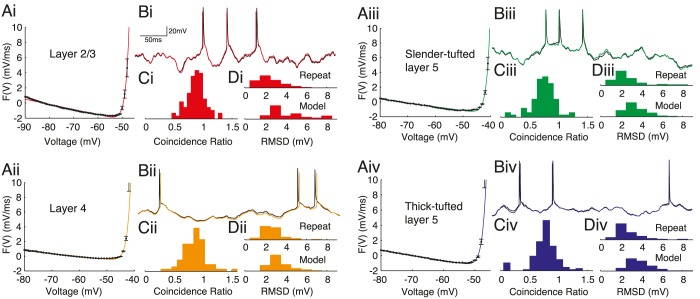Fig 2.
The dynamic I − V curve and associated refractory Exponential Integrate-and-Fire (rEIF) model fits to (i) layer-2/3, (ii) layer-4, (iii) slender-tufted layer-5 and (iv) thick-tufted layer-5 pyramidal-cell voltage timecourses. For each population the first panel A shows representitive empirical steady-state forcing terms (black; proportional to minus the dynamic I-V curve divided by capacitance) with the EIF form (colour; Eq (2)) providing a good fit for all populations. B compares the accuracy of the resulting rEIF model (coloured) to an experimental voltage trace (black). The histograms show performance measures for the voltage-timecourse fits: the spike-coincidence ratio C and the root-mean-squared difference in voltage D between repeated experimental traces (upper histogram), and experiment and model traces (lower histogram).

